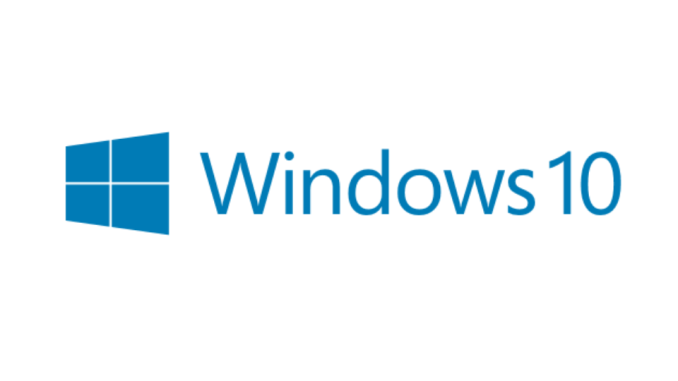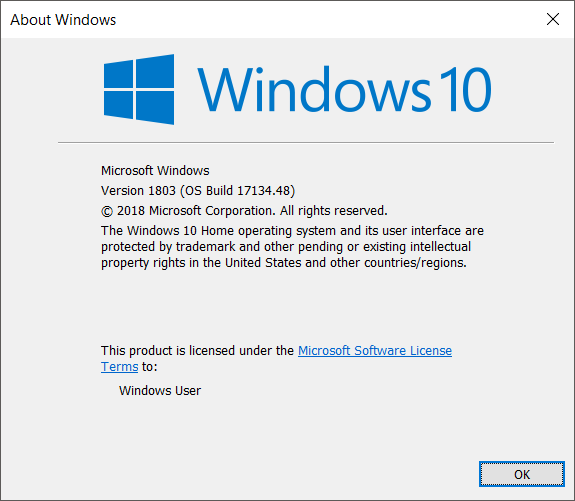The Windows 10 April Update (1803): The Littlest Big Update
by Brett Howse on May 25, 2018 8:00 AM EST- Posted in
- Software
- Operating Systems
- Windows
- Microsoft
- Windows 10

We’re about three years into Windows 10, and we’ve seen a lot of changes to the OS, as well as the servicing model, in those three years. The move to no longer offering major OS updates every couple of years with a new name, and requirement for purchase, is very welcome, and has likely been the biggest success of the Windows 10 launch. Microsoft has also refined the servicing model to a more consistent pattern of two updates per year, and while that can either be a pro or a con depending on where you stand, they’ve met that over the last couple of updates. With the Windows 10 April Update, which is version 1803, we’ve got arguably the smallest update yet in terms of new features, but that’s not really a bad thing. Three years in, the OS is mature enough that it’s good to see the company dialing back on the major interface changes, and hopefully focusing more on consistency, and reliability.
There’s still a lot of new features for the April Update, but only a handful of what you’d consider major feature additions to Windows. There’s Timeline, Nearby Share, Focus Assist, and Progressive Web App support being the most noticeable user-facing features, but there’s also a lot of little changes under the hood as well, such as more use of their Fluent design language across the OS, a continued movement of replacing the Control Panel with the new Settings app, and improvements to visibility of privacy information, among others.
| Windows 10 Version History | |||||
| Version | Version Number | Release Date | |||
| Windows 10 Original Release | 1507 | July 29, 2015 | |||
| November Update | 1511 | November 10, 2015 | |||
| Anniversary Update | 1607 | August 2, 2016 | |||
| Creators Update | 1703 | April 5, 2017 | |||
| Fall Creators Update | 1709 | October 17, 2017 | |||
| April Update | 1803 | April 30, 2018 | |||
It’s also worth discussing the state of Windows right now in the grand scheme of Microsoft. Terry Myerson, who has been the EVP of Windows and Devices for Microsoft for almost five years, and who has been the driving force behind the new Windows 10 model of constant servicing rather than large updates every couple of years, announced his departure from Microsoft in March of this year. Microsoft is in the middle of a transition from their legacy applications such as Windows and Office, to a cloud computing company based on services, and Windows is no longer going to be the driving factor there. As such, the former crown jewels of the company are being pushed to the outskirts. It’ll still be an important platform for Microsoft, but growth for the company is going to come from other places.
What this will mean for Windows 10 is likely going to be a reduction in resources allocated to its development, although that’s speculation at this time. It would not be surprising to see future updates scaled back in terms of frequency though. Considering the maturity of Windows 10 now, and the major foothold it has in the enterprise, a yearly update would likely make more sense anyway, so this might not be a bad thing.
We’ve also seen the latest April Update falling into some issues with delivery, thanks to some critical bugs found right before it was set to ship. This delayed the shipment of the new update until the very last day in April, which was only symbolically important because someone decided to call it the April Update. In reality, it wasn’t being pushed to anyone in April, but was available for people to manually get it. But as of this writing, the official rollout seems to be very slow to start, so perhaps there’s other issues holding up deployment, much like the incompatibility with the Intel 600p. That’s unfortunate, since the Fall Creators Update was pretty quick to rollout, but even with a massive beta test network in the Windows Insider Program, it proves again how difficult it is to do Windows as a Service on a regular schedule.
But, once it does start rolling out through Windows Update, there will be some new things to check out, so let’s take a look at some of them.











161 Comments
View All Comments
brshoemak - Friday, May 25, 2018 - link
"but that’s really a bad thing" - I assume you're missing a 'not' there. Not trying to be that guy but some people don't get context.Brett Howse - Friday, May 25, 2018 - link
If you don't want to be "that guy" you can always send me an email, but either way thanks for the feedback :)BenJeremy - Friday, May 25, 2018 - link
I tried to update this weekend, and it was a disaster. About an hour into the new update, everything on my system started hanging/freezing for minutes at a time. Simply emptying the recycle bin took agonizing minutes. My system is a monster system (64GB RAM, i7-6700K, 2xNVMe in RAID-0 for boot). It's probably a driver issue, but it was inexcusable that this was released into the public. After rolling back, my system was once again usable.IdBuRnS - Friday, May 25, 2018 - link
It's a bit much that you think it's "inexcusable" that they released it because you happened to have an issue. I updated last night and it went perfectly fine.Holliday75 - Friday, May 25, 2018 - link
Its inexcusable that Microsoft did not account for the 325,643,324,962,789 hardware, software, driver, firmware and bios combos. Damn them!nico_mach - Friday, May 25, 2018 - link
Some updates are better than others. Our IT dept actually sent instructions to delay Windows updates on home machines because they considered this so shaky. I didn't see it in time, updated and have been fine. You never know. I do have very recent hardware, ryzen, though.basroil - Friday, May 25, 2018 - link
No issues with 3 machines, haswell, kaby, and sandy bridge (yup, good old 2600k is still a beast!)Samus - Monday, May 28, 2018 - link
The last update I had issued with was the anniversary update two years ago. It broke Asus AI Suite for the Z97 motherboard I have so I just uninstalled it and set the fan cooking curves in the bios. But I know people who also had issues with anniversary update breaking other software that used drivers, specifically monitor software controls (really common on HP professional monitors)hansmuff - Saturday, May 26, 2018 - link
Any IT should have set the update frequency to "Semi-Annual Channel", not "Semi-Annual Channel (Targeted)", in which case no PC would have updated yet. That setting is specifically for organizations.leexgx - Sunday, May 27, 2018 - link
or more specifically for windows 10 Pro and enterprise (windows 10 home users cant easy limit unless they buy a windows 10 pro key for £$ 3-5)